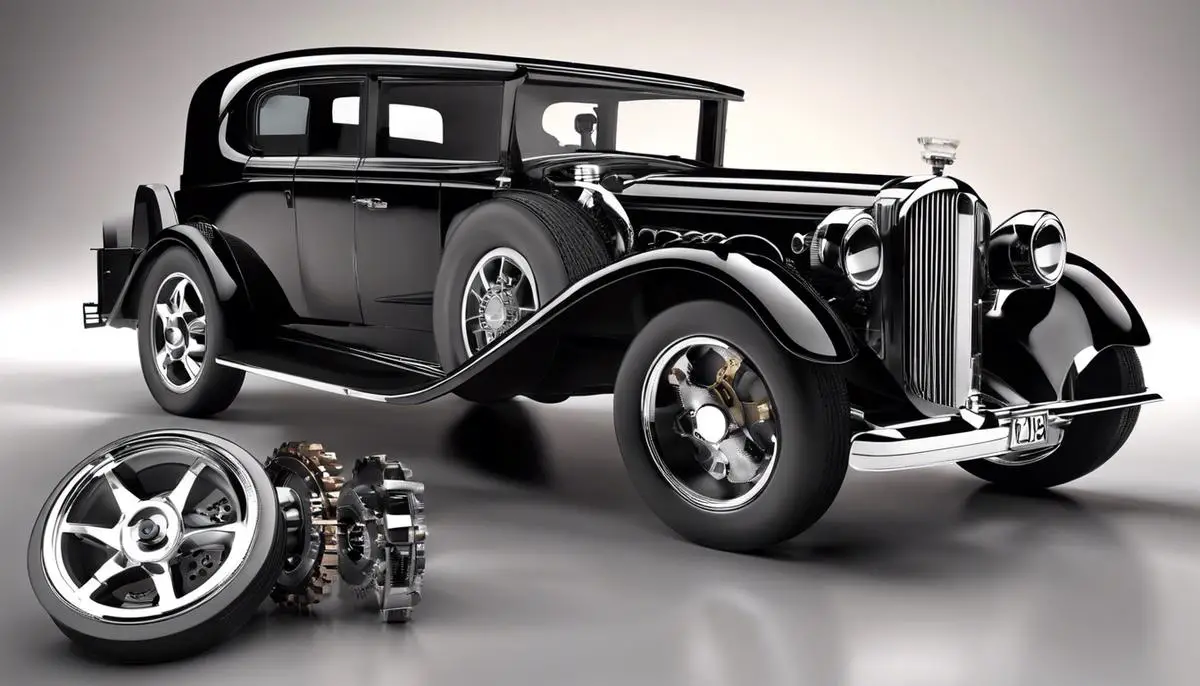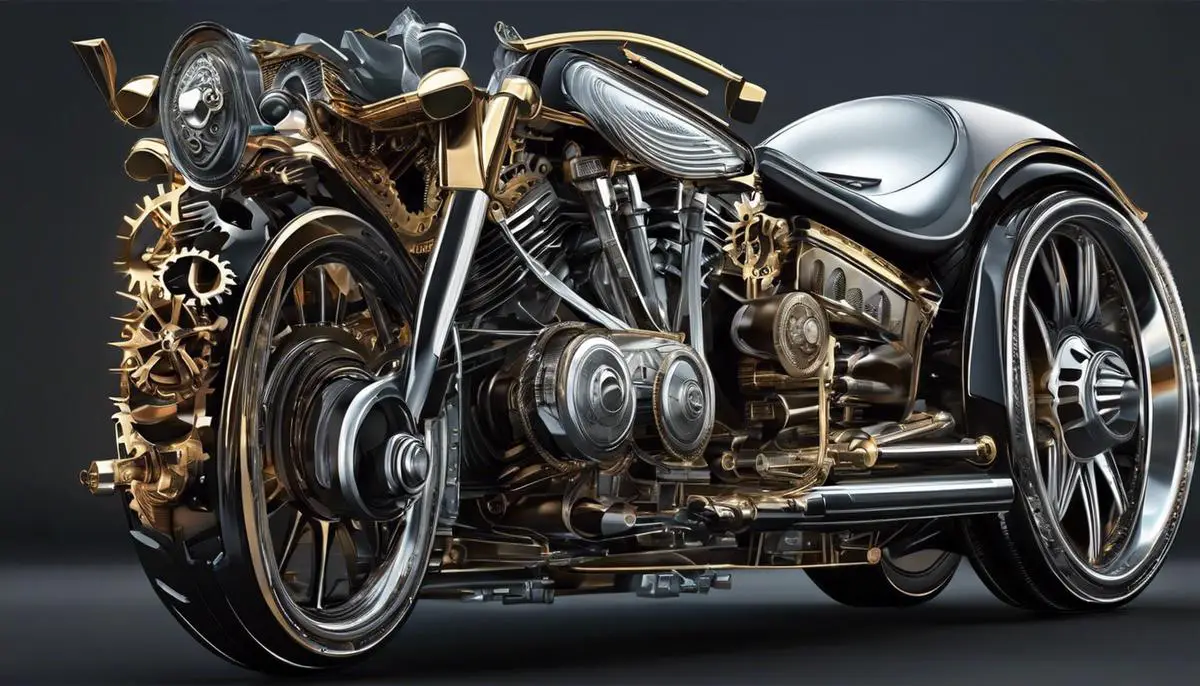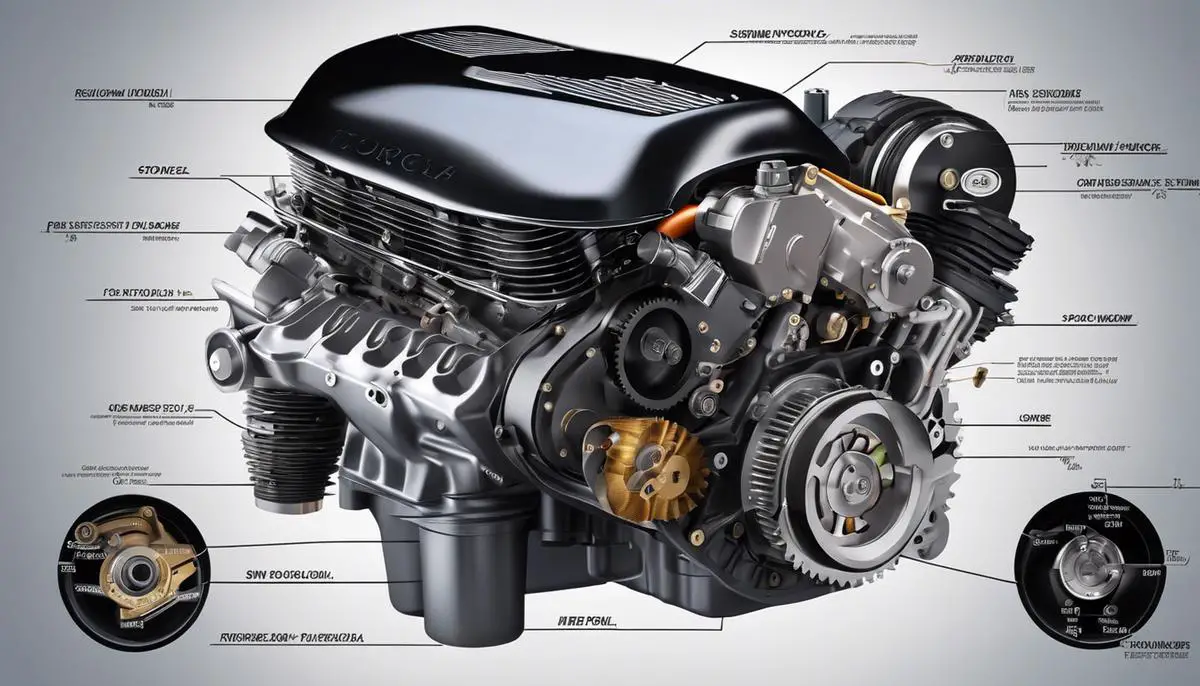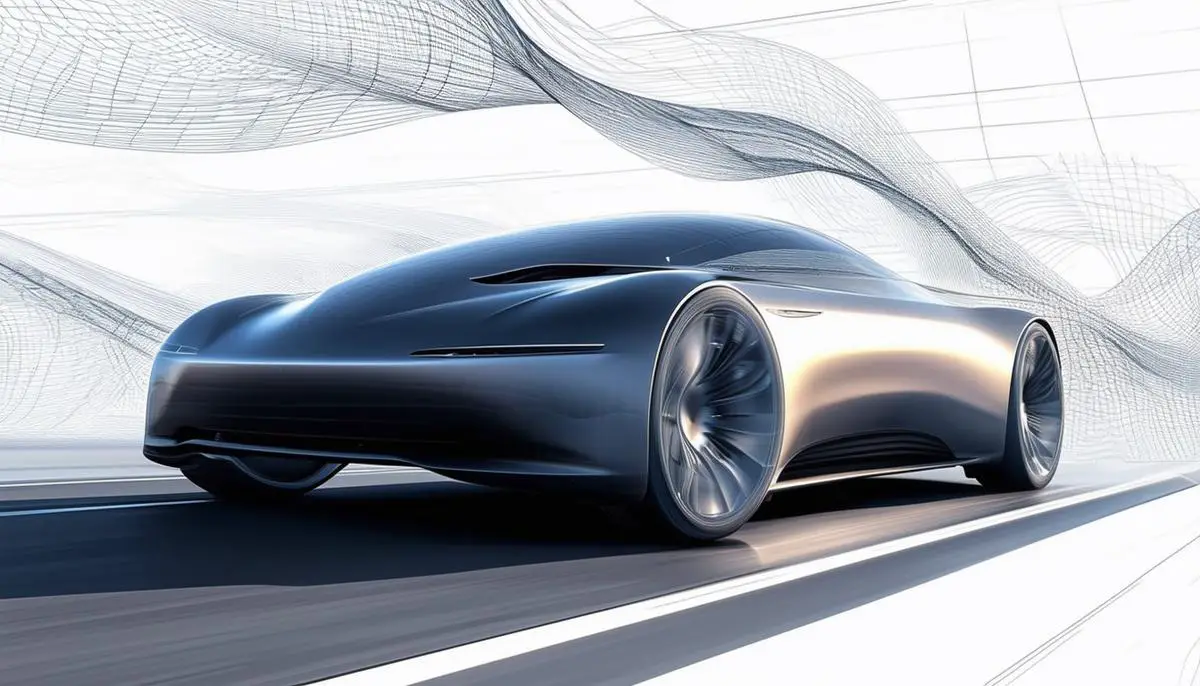Understanding a vehicle’s performance extends beyond simple speed metrics. In the world of automobiles, the terms torque and horsepower are thrown around regularly. As fundamental aspects of a car’s capabilities, they are key indicators of how a vehicle moves, accelerates, and exerts power. Before diving into the exciting world of high-speed racing or heavy-duty hauling, it’s vital to grapple with the concepts of torque and horsepower. This essay peels back these terminologies, shedding light on their definitions, their roles in different types of vehicles, and how the balance between them shapes the overall performance of a car. By engaging in this discussion, you’ll gain a solid grasp of these mechanics, enabling you to better understand and appreciate your vehicle’s performance potential.
Contents
Understanding What Torque Is
“Everyday Explained: Understanding the Role of Torque in Our Beloved Autos”
From the roar of an engine to the thrill of a fast-paced journey, nothing compares to the love affair between hobbyists and cars. Undeniably, this auto fascination transcends the simple act of driving from point A to point B. To make the most of this hobby, one must delve deeper, unraveling the mysteries hidden beneath the hood. And in this quest for automotive enlightenment, the concept of ‘torque’ emerges front and center. So, gear up, fossil fuel companions, let’s pop the hood!
To kick-start, what’s this buzzword ‘torque’? In layman’s terms, torque refers to the twisting force that propels the car forward. Imagine opening a jammed door with a wrench. The amount of ‘twist’ you put on that wrench – that’s torque! Now, take this concept and apply it to your car’s engine, and you’ve got the picture.
But, you may ask, isn’t horsepower what makes your car ‘go’? After all, it’s always who’s got the “horsepowery” car at the heart of friendly gabs. You are not wrong. Horsepower is an essential part of the equation. It measures the engine’s overall output. However, without substantial torque, all that horsepower languishes, becoming nothing more than an impressive number on your car’s spec sheet.
You see, torque provides initial momentum, the push you feel when you hit the gas pedal. It’s torque that rockets you off the starting line and boosts your car up that steep hill. It’s a rugged laborer toiling behind the scenes, enhancing your car’s performance in a variety of situations.
So why is it so vital to your car’s performance? To put it simply (because truly, that’s the best way to put things), torque equals power. It’s the grunt behind your car’s engine, the muscle flex that transforms your daily commute into a fun-filled journey. It impacts everything from acceleration to towing capacity, making it a truly significant factor for anyone interested in car performance.
Additionally, understanding torque plays a crucial role in ensuring you choose the right vehicle for your needs. Seeking speed? A high-torque car will satisfy your need for quick off-the-line acceleration. Coveting stability? Torque ensures maximum pulling power for your trailer or caravan without compromising on speed.
Throughout the joyous journey of auto appreciation, knowledge of concepts like torque can empower you to dig deeper, to appreciate the hidden machinations that make your beloved automobile so extraordinary. Just remember this little nugget – next time head out to a new car showroom or even an adrenaline-filled drag race, smile to the understanding that you now appreciate something marvellous, something called torque. Yes, torque, that unseen champion ensuring your car is more than just four wheels and a seat. Happy motoring!

Understanding What Horsepower Is
Love the thrill of pressing down on the accelerator and feeling a car’s engine roar to life? Intrigued about what exactly makes your car surge forward with such power? It’s all about the horsepower. Understanding horsepower and its impact on a vehicle’s performance not only paves the way for an educated decision when choosing your next ride but also deepens your appreciation for the engineering marvel that automobiles are.
While torque has a significant role to play in a car’s performance, horsepower is an equally crucial player in the game. So, let’s get down to brass tacks and delve into the mechanics of horsepower and its effect on your car’s performance.
First off, let’s clarify what horsepower is. Scotland’s James Watt, a man who found his name in the units of power, coined the term. He needed a way to communicate the power of his steam engines and found inspiration in the strong workhorses. Hence, one horsepower is equal to the amount of work a horse could output over a specific period: pulling 550 pounds over one foot in one second. In more modern terminology, it translates to 745.7 watts in the metric system.
It’s important to note that horsepower represents the total power output of an engine, whereas torque represents the rotational force an engine generates. In simple terms, horsepower is how fast a car can go at its peak, and torque determines how quickly that peak speed can be reached. Horsepower, in essence, is an indicator of your car’s speed capacity.
Consider this: horsepower is the beast that allows your vehicle to maintain high speeds on highways and open roads. So, if you’re someone who drives frequently on highways or simply enjoys the thrill of high speeds, you’ll want a car with high horsepower.
While horsepower undoubtedly contributes to your car’s top speed, it also impacts other aspects of your vehicle’s performance. For instance, having ample horsepower is beneficial when you’re driving on hilly terrains. The extra power allows your car to tackle steep climbs with ease. Moreover, if you’re planning to use your vehicle for towing, remember that while torque enables the towing, horsepower ensures the towed load maintains speed for a substantial distance.
Shifting gears, did you know that the horsepower rating of your car influences fuel economy? That’s correct; cars with higher horsepower more often than not consume more fuel. They are designed to get a lot of work done quickly, and that usually requires a larger quantity of fuel.
To wrap up, understanding horsepower can help you become a more informed car buyer, operator, and enthusiast. Whether it’s gauging a car’s top speed or considering fuel economy factors, this knowledge opens up the dimensions to appreciate your four-wheeled companion. While it might not help you win a street race or become a professional car tuner overnight, understanding horsepower certainly earns you the respect of your fellow car enthusiasts. So next time you find yourself at a car dealership or a friendly get-together, you’ll be able to wax eloquent about horsepower and its role in a car’s performance.
It’s a horse-powered world, after all. The more you know, the better the ride. Drive on, fellas!

Photo by houcinencibphotography on Unsplash
Comparing Torque and Horsepower
Shifting Gears: The Intricacies of Horsepower
Having delved into the compelling world of torque, let’s now shift gears and explore its performance partner, horsepower. Although it might sound like a term straight out of a medieval fair, horsepower is rooted in the automotive present and future.
Creating a simple analogy, if we think of our car as a runner, horsepower would be its endurance. It’s the ability to maintain high speeds over extended periods. Notably, torque might help our vehicle take off like a sprinter, but horsepower helps it perform like a marathon runner, keeping those speeds steady on interstate highways or long stretches of road.
Horsepower goes hand in hand with torque; they’re like teammates in a relay race. They both enhance the car’s overall performance but in different ways. A car with ample horsepower won’t get winded during those long uphill drives or while towing heavy loads. Your vehicle has the staying power, just like a workhorse, which incidentally gave horsepower its name.
But beyond making your drive smooth and powerful, an understanding of horsepower also comes with a significant but often overlooked advantage: fuel economy. You might be wondering how something that boosts power can also save on gas. Well, a car with high horsepower doesn’t exert itself as much in demanding driving conditions. This efficiency leads to a direct reduction in fuel consumption, an excellent advantage for both your wallet and the environment.
For potential car buyers and operators, horsepower isn’t just another number on the specification sheet. It’s an assessment of what your car can endure. For the enthusiasts who enjoy a fast and scenic, uninterrupted drive on a highway or up a winding hill, the horsepower will determine how your passion for speed pairs with an affinity for endurance.
In conclusion, both torque and horsepower contribute vital elements to your car’s performance. They work together, making your ride smoother, faster, and more efficient. Just as the torque gets you moving, horsepower keeps you going, providing the endurance and stability you need for a truly remarkable driving experience. If you’re a high-speed highway adventurer or facing towing challenges, horsepower offers the necessary strength for your car’s performance. Understanding these elements will surely fuel your knowledge and love for cars.

The Role of Torque and Horsepower in Different Types of Cars
If horsepower and torque are the “yin and yang” of automobiles, tailoring each for specific tasks is an art that takes the vehicle from average to exceptional. The study now turns to the torque-horsepower dichotomy in sports cars and trucks, two types of vehicles seemingly at odds regarding their roles but linked by our fascination with horsepower and torque.
Sports cars are for thrill-seekers who take delight in prompt acceleration and optimal speed on racing tracks and highways. A marked attribute of sports cars is their balance of torque and horsepower. Despite their frequently compact size, sports cars require impressive torque for snappy off-the-line acceleration, hence their engines generate a considerable amount of torque at lower RPM (revolutions per minute).
Comparatively, horsepower takes on a significant role as well. Once a sports car hits its stride at higher speeds, horsepower comes into play to maintain and increase this velocity over distance, while providing an added feeling of power and responsiveness. This is partly due its purpose: maintaining high RPM, which translates to higher speeds. Therefore, the powerful collaboration of torque and horsepower is paramount for sports cars to perform as they do – swiftly, sharply, and impressively.
On the flip side, trucks – designed for hauling and towing heavy payloads – heavily rely on greater amounts of torque. Trucks need to deliver strong pulling power (torque) at low RPMs. This power enables the truck to pull heavy loads without demanding as much energy from the engine, leading to increased efficiency and less engine strain. High torque especially proves to be an asset when climbing steep terrains or when towing heavy objects over distance, making trucks the powerhouses we recognize them to be.
Horsepower in trucks, however, by no means takes a back seat. It, too, plays a crucial role, especially in maintaining speed over long periods of time, ensuring the vehicle has the ability to effectively deliver heavy payloads across distances. Understanding why trucks rely so heavily on this balance will only refine your appreciation for these dependable beasts of burden.
So, now you may appreciate the yin-yang relationship between torque and horsepower and their varying roles across different types of vehicles. It’s this intriguing relationship, combined with the creator’s intent, that crafts both the lightning-fast sports car and the unflinching, powerful truck. This very diversity makes the world of automobiles so fascinating and complicated. And so, the more you learn, the more the road unfolds before you. Happy driving!

Reading a Dyno Chart
Diving Deeper: The Dyno Chart – A Powerful Tool to Unleash Your Car’s Performance
A car enthusiast is curious, always eager to learn new things. The universe of automobiles is indeed an adventurous playground. As we go beyond torque and horsepower, it’s intriguing to understand how these two vital parameters can be tracked and interpreted. And this is where the Dyno Chart steps in – a fascinating tool that brings torque and horsepower together and visualizes the performance of an automobile.
Understanding the concept of a dyno chart is not rocket science; it’s a basic graphical representation of an engine’s power output. Picture a graph with two primary axes – the vertical axis represents horsepower and torque, and the horizontal axis represents RPMs (revolutions per minute). The horsepower and torque curves run parallel to each other, giving you key performance insights.
Interpreting a dyno chart can be quite interesting. You’ll often see two continuous curves running across the graph. The one that peaks faster and at lower RPMs is the torque curve, while the one that reaches its peak at higher RPMs and stays more consistent across a broader range is the horsepower curve.
All of this data is captured during a dynamometer (or ‘dyno’) test. In such a test, the car is driven at maximum effort on a specialized machine, while torque and horsepower are simultaneously measured across various engine speeds. It provides invaluable insights into the performance capabilities of the vehicle being tested.
Tips to Read a Dyno Chart
- Start by identifying the two curves: The curve that is more prominent in the lower RPM range is usually representing torque, the other is horsepower.
- Observe the point where the torque and horsepower curves intersect: This usually happens at 5,252 RPMs.
- Take note of the peak points of the torque and horsepower curves. These values represent the maximum torque and horsepower that the engine can produce.
Closely observing the dyno chart gives car enthusiasts an edge when it comes to contextualizing these two key performance measures. For most cars, the point of peak torque is where the car feels the most responsive. Knowing the RPM at peak horsepower can give drivers the confidence to maintain engine speeds that maximize power output.
So, if you are passionate about understanding the nuts and bolts of cars, dig deeper, wade into the waters of dyno charts, and discover a whole new perspective. As a new hobby or a lifelong fascination, the world of automobile kinematics has plenty to offer! Armed with the knowledge of dyno charts, you will no longer be just a driver. You become an aficionado, someone who appreciates and understands the power beneath the hood.

Just as we come to appreciate the power of an orchestra by understanding the roles of each instrument, the same applies to comprehending a car’s performance via an evaluation of torque and horsepower. As we’ve cemented, torque is the force directly responsible for propelling the car from a standstill, and it’s what keeps the wheels spinning even when laden with heavy loads. Meanwhile, horsepower is the indicator of how rapidly this force can be employed, dictating the speed or the maximum speed a car can achieve.
The different types of vehicles place their emphasis accordingly. While sports cars may scream horsepower, heavy-duty vehicles underscore the worth of torque. Reading a dyno chart can help put these concepts into perspective, by picturing the relationship between these driving forces. With the knowledge acquired, the next time you find yourself intrigued by a car’s performance specs, you can delve deeper than surface level and truly appreciate the science and mechanics that go into creating that raw vehicular power.



